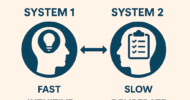Few will argue that the overall health of Americans has deteriorated in the past quarter century. Diabetes or prediabetes afflicts nearly 120 million people. Roughly two of three Americans are either overweight or obese. Pharmaceutical companies focus on drug discovery as a solution. Thousands of apps for smart phones are being developed to change our destructive behavior. But, lacking in both of these is a true solution, one that draws proven behavioral change models and incorporates a basic human desire in our search for better health: a nurturing, coaching relationship.
Health behavior is the result of a complex interaction of influences on a number of dimensions. These include the obvious individual determinants such as education level, socioeconomic factors, cultural influences and interpersonal relationships, as well as temporal issues such as age and stage of life. Overlaying these are societal (legal) and organizational influences. Other factors that influence behavior — especially lifestyle — are emotion, feelings of self-efficacy and habits, many of which are not consciously obvious. In fact, if you ask people why they behave in a certain way, many cannot answer, or their answer does not hold up to observed practice.
Psychologists and physicians have been studying many of these factors for years and have developed dozens of theories to help in the understanding of health behaviors. The most commonly used theories and models boil down to eight to 10 main theories. The most popular and used theories include: trans-theoretical model/stages of change (TTM/stages of change), health belief model, social support and social networks models, patient-provider communication theories, theory of reasoned action and theory of planned behavior (TRA/TPB).
Interpersonal communication is one of the most critical factors in changing health behavior. Of these, the most studied is the powerful physician-patient relationship. Patients accept their physician as the most knowledgeable person with whom to interact with when it comes to health care. Patients demonstrate enormous trust in this relationship. The patient-provider models focus on several key factors:
- fostering healing
- information exchange
- responding to emotion
- managing uncertainty
- making decisions
- enabling patient self management
Although the physician-patient relationship is quite powerful, it has failed to keep pace with the growing needs of our nation. Most physicians will agree that a primary reason for the deteriorating relationship is the lack of time during the typical office visit; most primary care visits last only 8 to 15 minutes. Our society attempts to substitute nurse practitioner and physician assistant time for the physicians, but the same access and cost issues strain these relationships. More importantly, we must face the following reality: To change behavior a patient needs more than just a visit every several months. People spend only a few hours per year in the presence of a trained professional, and that’s simply inadequate.
We need a new model for healthy behavioral change. Dr. B.J. Fogg a popular contemporary psychologist uses a “formula” that simplifies all of the theories of behavioral change. He states that to change behavior you need to improve motivation, break down the desired behavior into “doable” bite-sized pieces and then trigger the behavior. All of these — motivation, ability and trigger — need to occur simultaneously and repeatedly in the case of obesity, prediabetes and diabetes.
I propose that a virtual health assistant (VHA) can provide this model for change. What is a virtual agent? Movie fans will remember HAL from 2001: A Space Odyssey and J.A.R.V.I.S. from the Iron Man series. and perhaps Siri can also be used an example.
But for health behavior, you must have an agent that is focused on healthy behavior. A well-trained artificial intelligence-based “agent” that sits on a smart phone using a natural language processing engine opens up all kinds of opportunities to influence behavior. Think of this: The agent literally talks to you. It reminds you to take your medication, instantly calculates how many calories are in a meal, tracks your caloric intake and exercise, prompts you to exercise, provides a healthy “tip of the day,” encourages a healthier substitute at the fast food store, breaks down your health goals to smaller intermediate goals — 1,000 daily steps versus running a marathon.
It can also ask questions and follow up on them. For instance: “Have you ever considered what it would be like to have your diabetes and hypertension totally controlled?” Or, “How would your life be different if you suddenly found yourself free from you addiction?”
The use of a VHA draws on this powerful “expert” ombudsman model to develop a relationship with people. The convergence of raw computational power, cloud-based applications, smart devices and natural language technology now combines with expert knowledge and unlimited VHA-patient interaction to create a powerful new tool to improve health.
Drawing on all of the available theories and models discussed above, a VHA has the unprecedented opportunity to change behavior of large populations and change the course of our collective health. Through conversation and contextually-based programming, a VHA establishes a “personal health-fostering relationship” with a person to assist the in the understanding of their condition, manage uncertainty, respond to their emotional needs, determine barriers to behavioral change, assist in patient self-management and also embed itself into our social structure to provide you with access to similar patients to engage our social needs.
The VHA is limited only by the imagination of the organization willing to engage in this strategy to improve health. The science is available. The technology is advanced and available. The need is present. The onus is on early adopters to develop these initiatives.
Our medical system is going through enormous change because the status quo is not sustainable. We cannot continue to throw more money and professionals at a problem that requires more than what physicians, nurses and other health care providers can provide. Only through the use of a VHA can we hope to solve the health behavior problems we are facing.
Thomas Morrow is an advisor, Next IT, and medical director, Genentech.















![Rethinking medical education for a technology-driven era in health care [PODCAST]](https://kevinmd.com/wp-content/uploads/The-Podcast-by-KevinMD-WideScreen-3000-px-4-190x100.jpg)






